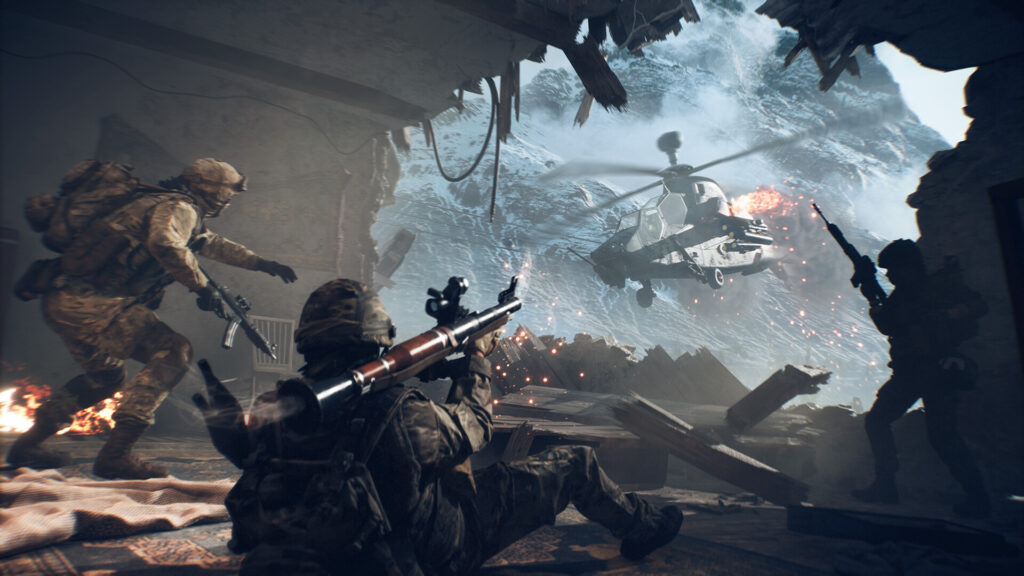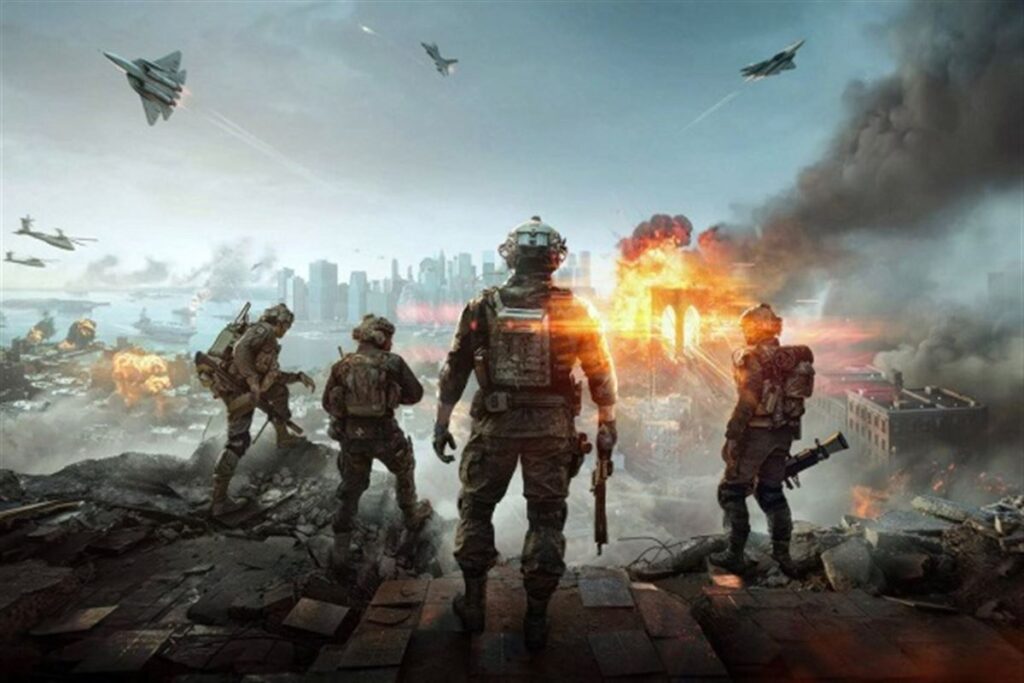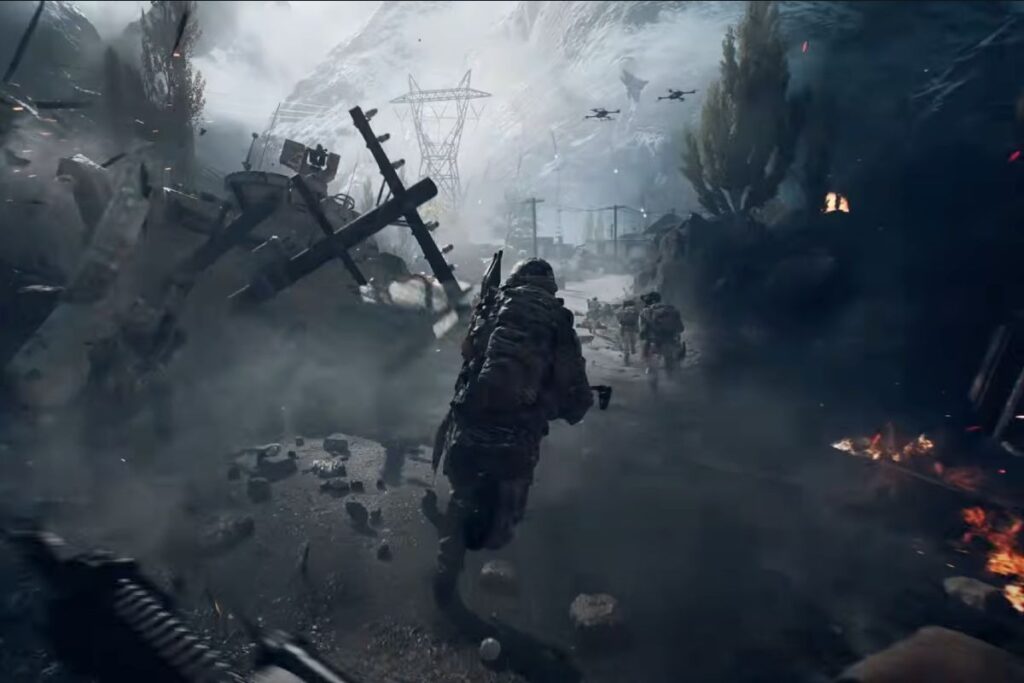The Battlefield Universe represents more than two decades of large-scale warfare, evolving game engines, and innovative multiplayer design. As one of the most influential FPS franchises in gaming history, Battlefield has continuously pushed boundaries in terms of scale, audio design, destruction, and combined-arms warfare. From historical battlegrounds to modern theaters of combat and even futuristic conflicts, the series operates as a flexible multi-era universe rather than a single linear storyline. Each entry contributes unique themes, mechanics, and identity markers that shape the franchise as a whole.
The franchise’s ability to shift between eras, World War I, World War II, modern warfare, and speculative futures, reflects its adaptability and commitment to fresh gameplay concepts. Despite this range, Battlefield maintains a consistent identity rooted in squad play, vehicles, sandbox freedom, and large-scale objective battles. With new titles such as Battlefield 6 and Battlefield RedSec entering the ecosystem, the Battlefield Universe continues to expand with modern approaches to multiplayer design, evolving player expectations, and long-term live-service ambitions.
This blog will explore the full Battlefield timeline, themes, individual eras, and the role of Battlefield 6 and RedSec within the universe. It offers a complete view of the franchise while guiding readers through each era’s impact, identity, and place within Battlefield’s evolving structure.


A Quick Overview Of The Battlefield Franchise
Before diving deeper into each era, it’s important to understand how the Battlefield Universe has evolved over time. The table below provides a quick reference to the main Battlefield games, including their release year, setting, and notable features. This snapshot helps readers understand the franchise’s progression from its historical roots to its most recent entries, including Battlefield 6’s modern direction and the standalone design of RedSec.
| Title | Release Year | Setting | Notes |
| Battlefield 1942 | 2002 | WW2 | Original large-scale warfare |
| Battlefield Vietnam | 2004 | Vietnam War | Expanded vehicle variety |
| Battlefield 2 | 2005 | Modern | Advanced squad system |
| Battlefield 2142 | 2006 | Futuristic | Titan mode & mechs |
| Battlefield Bad Company | 2008 | Modern | First story-driven campaign |
| Battlefield 3 | 2011 | Modern | Urban combat & Frostbite showcase |
| Battlefield 4 | 2013 | Modern | Levolution & large destruction |
| Battlefield 1 | 2016 | WW1 | War Stories narrative format |
| Battlefield V | 2018 | WW2 | Squad-focused design |
| Battlefield 2042 | 2021 | Near future | Specialists & dynamic weather |
| Battlefield 6 | 2025 | Modern | Return to series roots |
| Battlefield RedSec | 2025 | Near future BR | Standalone battle royale |
This overview demonstrates Battlefield’s wide thematic range and how Battlefield 6 fits within its modern era lineage. For players looking to enhance their Battlefield 6, or RedSec experience, you can explore Battlefield 6 cheats & Battlefield RedSec cheats.


The Vision And Core Identity Of The Battlefield Universe
The Battlefield Universe is held together by core principles that remain consistent across every era. No matter whether a game takes place in WW1 trenches or a climate-ravaged future, Battlefield maintains a recognizable identity shaped by scale, squad cooperation, destruction systems, and vehicle integration. These pillars differentiate Battlefield from other shooters and contribute to its enduring appeal.
One of the defining components is large-scale warfare. Maps are expansive and accommodate infantry, armor, air vehicles, and occasionally naval forces. This diversity allows players to choose their preferred role, contributing to a dynamic battlefield where strategies shift constantly. Combined-arms gameplay is central to the franchise’s identity, creating memorable emergent moments through player creativity rather than scripted events.
Destruction has also been a core mechanic since the early years. From basic building collapses in Bad Company to the extensive environmental systems in Battlefield 4 and modern Frostbite iterations, destruction impacts strategy, movement, and objective control. This interplay between environment and player choice helps Battlefield stand out in the FPS space.
Squad cohesion, supported by role-based gameplay, revives, spotting systems, and resource exchanges, reinforces team coordination as a central theme. Battlefield’s audio design, weapon soundscape, explosions, vehicle engines, and environmental ambience, completes the signature experience. Together, these elements define the Battlefield Universe’s identity across all eras.

World War 1
The Battlefield Universe’s representation of World War I is primarily showcased through Battlefield 1, a title that revitalized interest in historical shooters. Battlefield 1 takes a grounded, human-focused approach through its War Stories anthology format, delivering narratives centered on individuals facing extraordinary circumstances. This structure emphasizes emotional storytelling rather than a single protagonist or campaign arc.
Gameplay reflects the limitations and experimental nature of early 20th-century warfare. Bolt-action rifles, prototype machine guns, slow-firing sidearms, and early tanks contribute to a pacing that feels intentional and immersive. Combat encounters in trench networks, open battlefields, and devastated landscapes highlight the brutality and chaos of WW1 while offering players tactical depth.
Battlefield 1’s tone distinguishes it within the franchise. Its focus on heroism, sacrifice, and the human cost of war creates a more reflective player experience. Vehicles such as early tanks, biplanes, and armored cars introduce historically accurate challenges and advantages, reinforcing the authenticity of the setting. This era enriched the Battlefield Universe by adding narrative complexity and emotional weight while maintaining the signature large-scale, squad-based gameplay.

World War 2
The Battlefield Universe explores World War II through Battlefield 1942 and Battlefield V, each contributing different perspectives on the conflict. As the franchise’s origin point, Battlefield 1942 established the foundation for what the series would become. Its large maps, iconic WW2 theaters, and variety of vehicles, including tanks, planes, and naval vessels, defined Battlefield’s identity from its inception. The game emphasized combined-arms warfare, objective-oriented gameplay, and open-ended battles.
Battlefield V revisits WW2 with modern technological improvements and refined mechanics. The game emphasizes squad coordination, era-authentic weapons, and environmental immersion. Enhanced destruction systems, tactical movement, and a strong focus on team-based mechanics modernize the classic WW2 experience. Despite mixed reception early in its lifecycle, ongoing updates improved map design, faction representation, and content depth.
Both titles contribute significantly to the Battlefield Universe, reinforcing the franchise’s roots in historical conflicts while evolving its signature features. Their vehicles, weapon limitations, and theater diversity influence how players perceive Battlefield’s approach to historical authenticity and large-scale warfare.


Modern Warfare
Modern warfare remains one of the franchise’s most defining and popular eras, represented by Battlefield 2, Battlefield 3, Battlefield 4, and Battlefield 6. Each title introduced major advancements that shaped how players understand Battlefield’s approach to realistic contemporary combat.
Battlefield 2 laid the groundwork for modern era gameplay with features such as commander mode, squad-based tactics, and early drone-style reconnaissance. These systems introduced strategic depth and coordination not commonly seen in FPS games at the time. Battlefield 3 expanded on this vision using the Frostbite engine, delivering unparalleled audio-visual quality, urban combat environments, and fluid movement systems.
Battlefield 4 refined modern Battlefield gameplay with Levolution, naval combat, and large-scale dynamic destruction that influenced objective flow and match strategies. It remains one of the most beloved entries due to its balance between vehicle warfare and infantry mobility.
Battlefield 6, the newest entry, continues this lineage by returning to the franchise’s traditional class structure, tactical sandbox, and modern military aesthetic. It also contributes to the franchise’s visibility through its strong launch performance, reflected in high interest surrounding metrics such as battlefield 6 player count, battlefield 6 active players, battlefield 6 concurrent players, and battlefield 6 player stats. These player numbers underscore community enthusiasm and support long-term content development. Players seeking performance advantages can explore Battlefield 6 cheats.


Futuristic Warfare
The futuristic era of the Battlefield Universe is represented primarily by Battlefield 2142 and Battlefield 2042, each offering a different interpretation of advanced warfare. Battlefield 2142 adopts a far-future scenario marked by mechs, Titan carriers, railgun technology, and energy-based weapons. Titan mode, one of the franchise’s most innovative game types, blends airship assaults with ground-based objective gameplay, emphasizing verticality and multi-phase strategy.
Battlefield 2042, meanwhile, presents a more grounded near-future setting influenced by climate crises, geopolitical tension, and advanced military technology. The game introduces autonomous drones, advanced infantry gadgets, and dynamic weather phenomena such as tornadoes and severe storms. Its Specialist system reshapes class identity by integrating ability-driven roles while maintaining access to a shared gadget pool.
Futuristic Battlefield titles introduce faster movement, advanced weaponry, and high-tech battlefield tools that expand gameplay possibilities. They differ from historical and modern entries through pacing, weapon variety, and the increased presence of technology-driven tactics. These elements contribute to a broader sense of what the Battlefield Universe can explore, enriching its thematic diversity.


Battlefield RedSec: A New Battle Royale
Battlefield RedSec introduces a standalone battle royale experience that exists outside the traditional Battlefield timelines. Unlike previous entries, RedSec is designed to function as an independent competitive ecosystem with its own operators, progression systems, and mobility-focused mechanics. This structure allows RedSec to leverage Battlefield’s destructive environments while embracing faster, more vertical movement and extraction-influenced pacing.
Operators in RedSec differ significantly from classic Battlefield soldiers. Their movement capabilities, equipment loadouts, and progression paths emphasize individual skill expression and adaptive strategies. Instead of relying on faction-based roles or traditional classes, RedSec focuses on unique operator abilities that shape different playstyles.
The gameplay loop emphasizes high-stakes engagements, zone control, and on-the-fly decision-making as players upgrade equipment and navigate the battlefield. While separate from the mainline universe, RedSec contributes to the broader Battlefield identity through destructive systems, map variety, and the blend of tactical decision-making with high-intensity action.


Other Standalone Experiences Within The Battlefield Universe
Several titles within the Battlefield Universe sit outside the main timeline but contribute distinct identities to the franchise. The Bad Company series, including Battlefield Bad Company and Bad Company 2, introduced a more narrative-driven structure with memorable characters, humor, and cinematic pacing. These games explored smaller-scale stories while maintaining the iconic destruction mechanics that define the franchise.
Battlefield Hardline takes a different approach entirely, focusing on law enforcement themes rather than military operations. It introduces heist mechanics, urban environments, and episodic storytelling reminiscent of crime dramas. This shift in tone demonstrates the franchise’s flexibility and willingness to experiment with alternative settings and themes.
Each of these standalone experiences enriches the Battlefield Universe by expanding its creative boundaries. They showcase the franchise’s ability to adapt to new genres and storytelling styles while still maintaining core gameplay principles such as squad coordination, destructible environments, and objective-driven progression.

The Future Of The Battlefield Universe
The future of the Battlefield Universe appears rooted in expanding and refining its interconnected ecosystem. With the release of Battlefield 6, the franchise has renewed its modern warfare focus, emphasizing classic mechanics, large-scale battles, and long-term community support. Battlefield 6’s sustained interest, reflected in discussions surrounding battlefield 6 player count and related statistics, helps shape ongoing development priorities.
Future support for the franchise likely includes additional content for Battlefield 6, ongoing adjustments to RedSec, and continued refinement of franchise identity across its various eras. EA and DICE have indicated a commitment to broader universe-building, creating opportunities for cross-title resonance, consistent updates, and expanded live-service integration.
While specific future features remain unconfirmed, the general direction suggests a balance between honoring Battlefield’s traditional identity and exploring new avenues for large-scale multiplayer experiences. This forward-looking approach aligns with community expectations and the franchise’s long history of innovation.


The Battlefield Universe FAQs
Here are the essential Battlefield Universe answers, from timeline order to how Battlefield 6 and RedSec fit into the franchise.
Are the Battlefield games connected?
Battlefield games are not connected by a single story. Each game has its own characters and timeline. The series is linked through shared themes such as large scale combat, destruction, and military settings, but not through one continuous narrative.
What is the Battlefield timeline?
The Battlefield timeline is a collection of eras that span from World War 1 to the far future. The series does not follow one story. Instead, each game sits in its own historical or futuristic period.
Battlefield timeline in order:
- World War 1 (Battlefield 1)
- World War 2 (Battlefield 1942, Battlefield V)
- Vietnam War (Battlefield Vietnam)
- Early Modern Era – Alternative Timeline (Battlefield Bad Company & Bad Company 2)
- Modern era (Battlefield 2, 3, 4, Battlefield 6)
- Near future (Battlefield 2042)
- Far future (Battlefield 2142)
- Battlefield RedSec exists outside this timeline as a separate universe.
Do the Battlefield timelines overlap?
Battlefield timelines overlap only in era, not in story continuity. Several games take place in similar periods, such as the modern era titles, but they do not follow the same plot. Battlefield RedSec does not overlap with the mainline timelines.
How many Battlefield games are there?
There are more than fifteen Battlefield games, including mainline entries, spin offs, futuristic titles, and new releases like Battlefield 6 and Battlefield RedSec. The exact number depends on whether mobile and expansion titles are included.
What era does Battlefield 6 take place in?
Battlefield 6 takes place in a modern warfare era. It focuses on current day military technology, modern vehicles, and large scale combined arms battles similar to Battlefield 3 and Battlefield 4.
What is the chronological order of the Battlefield story?
The chronological order of Battlefield is based on historical setting rather than narrative links.
Battlefield chronological order:
- Battlefield 1
- Battlefield 1942 and Battlefield V
- Battlefield Vietnam
- Battlefield Bad Company 1 and 2
- Battlefield 2, 3, 4, Battlefield 6
- Battlefield Hardline
- Battlefield 2042
- Battlefield 2142
Battlefield RedSec sits outside the chronological order.
What Battlefield games are in the same universe?
Battlefield games share the same franchise universe through themes, not a single storyline. Titles connected by era include:
- WW1 and WW2 games
- The modern era games (2, 3, 4, 6)
- The future era games (2042 and 2142)



